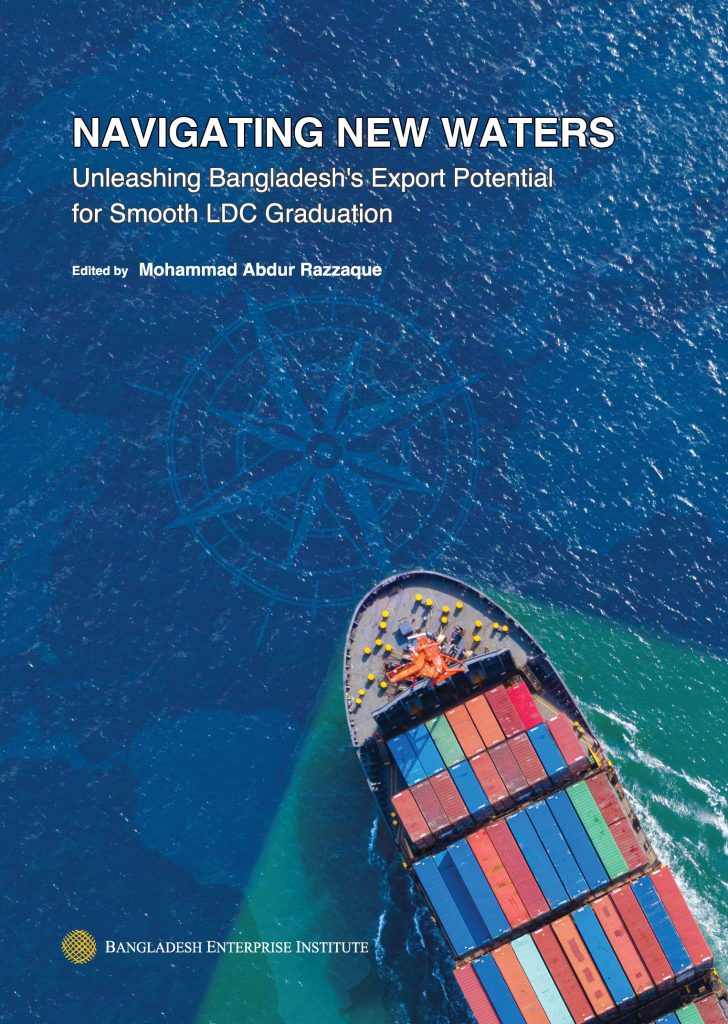
Webinar on Multidimensional Poverty Index 2020

Cushioning the educational fallout of Covid-19 in Bangladesh
Navigating New Waters
Unleashing Bangladesh's Export Potential for Smooth LDC Graduation
Edited by Mohammad Abdur RazzaquePublisher: Bangladesh Enterprise Institute (BEI)
ISBN: 9789843491282
 Bangladesh has made tremendous progress in its economic development and its impending graduation from the group of least developed countries, set to take place in 2024, represents a major development transition. Along with its various achievements in terms of rising per capita income, declining poverty incidence, and women’s improved economic empowerment, etc., Bangladesh – among LDCs – also stands out as an impressive success story of an export-led growth and development process.
Bangladesh has made tremendous progress in its economic development and its impending graduation from the group of least developed countries, set to take place in 2024, represents a major development transition. Along with its various achievements in terms of rising per capita income, declining poverty incidence, and women’s improved economic empowerment, etc., Bangladesh – among LDCs – also stands out as an impressive success story of an export-led growth and development process.The LDC graduation, however, requires preparing for the resultant discontinuation of international support measures, particularly those related to trade preferences that have profoundly benefited Bangladesh. Sustaining the apparel export performance and unleashing the export potential of many other sectors will be two critical factors in ensuring a smooth transition process.
This volume, comprising 13 chapters, contributes to the policy discourse on LDC graduation by providing objective assessments of some of the major issues that now require urgent policy attention.
Part I of this volume highlights the longstanding challenges facing the export sector and the likely implications of graduation from the perspectives of the private sector.
In Part II, Bangladesh’s trade relationships with four key trading partners viz. the European Union, the United States, India, and China are discussed. The chapters identify areas of greater engagement with these partners in the light of LDC graduation realities.
Finally, Part III ascertains the export potentials of six selected sectors (leather, plastic, furniture, pharmaceutical, jute, and services) and offers policy recommendations essential for enhanced export receipts.
Overall, the analyses presented in this volume include, among others, the factors affecting export competitiveness, major changes in market access provisions after graduation, ways forward for securing most favourable trading arrangements with important trading partners, and support measures needed to boost and diversify exports.


